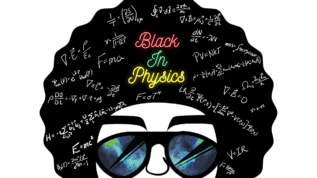Physicists worldwide showed spirit and innovation, but 2020 can’t end soon enough. Physics World editor-in-chief Matin Durrani looks back at the year that’s coming to an end.

I remember receiving one of those “hilarious” WhatsApp messages in mid-March just as the coronavirus pandemic was taking hold and everyone was going slightly mad. Signed by “The Management”, it declared that it was no longer in anyone’s best interests to proceed with 2020 and that “after careful consideration”, this year had been cancelled. “While we recognize that a lot of hard work has gone into preparing for 2020, it has turned into a bit of a shitshow and we feel it is best to just call it off.”
I laughed, thinking that 2020 couldn’t possibly end up being that bad. Surely COVID-19 would be quickly forgotten and we’d all be back to “normal” in short measure. In fact, 2020 has been an absolute stinker. It’s ranged from the seriously bad – death, illness, lockdown and economic disruption – to the merely frustrating: social distancing, face masks and copious amounts of hand gel.
As if the pandemic wasn’t bad enough, 2020 saw the loss of several distinguished physicists who had had long and successful careers, including the Nobel laureates Philip Anderson (96), Masatoshi Koshiba (94), Arthur Ashkin (98) and Jack Steinberger (99), as well as the eminent mathematical physicist Freeman Dyson (96). We mourned too the destruction of the iconic Arecibo Observatory in Puerto Rico, which dramatically collapsed following structural damage.
It’s hard to put a positive spin on the year that’s mercifully drawing to a close (and I haven’t even mentioned Brexit yet, though there was some last-minute good news in the form of the withdrawal deal agreed by the EU with the UK on Christmas Eve, which means that Britain will fortunately remain part of the vital Horizon Europe research programme).
Positive spin
Still, I’ll try to look on the bright side. First off, as we’ve reported on the Physics World website in our “Physics in the pandemic” blog series, physicists have shown enormous resilience. Conferences, lectures and events have gone online, opening up such occasions for a more diverse mix of people. Kits for lab classes have been posted to students. Old data have been analysed while plans for future experiments have been drawn up. Hi-tech businesses have innovated with a renewed green focus, while medical and biophysicists have taken centre stage.
The importance of making physics more attractive and welcoming to people of all backgrounds has, rightly, been in the spotlight as never before.
 Second, the importance of making physics more attractive and welcoming to people of all backgrounds has, rightly, been in the spotlight as never before. It was great to see Andrea Ghez’s work on black holes making her the second woman in three years to win the Nobel Prize for Physics, while October saw the first #BlackInPhysics week followed soon after by BlackInNano week. Here at Physics World we were delighted to welcome a new pool of contributing columnists from across the international physics community, bringing fresh voices to Physics World.
Second, the importance of making physics more attractive and welcoming to people of all backgrounds has, rightly, been in the spotlight as never before. It was great to see Andrea Ghez’s work on black holes making her the second woman in three years to win the Nobel Prize for Physics, while October saw the first #BlackInPhysics week followed soon after by BlackInNano week. Here at Physics World we were delighted to welcome a new pool of contributing columnists from across the international physics community, bringing fresh voices to Physics World.
Great physics
We should also celebrate the fact that plenty of amazing physics has continued, as made clear through the variety of exciting research featured in the Physics World top 10 Breakthroughs of the Year, Our picks this year ranged from the first room-temperature superconductor (albeit at high pressure) to a super-sensitive X-ray detector. The overall prize went to physicists in the Netherlands and Germany, who created a silicon-based material with a direct band gap that emits light at wavelengths used for optical telecommunications.
There was also the exciting news of the potential discovery of phosphine – a signature of life – in the clouds of Venus. Finding life elsewhere in the cosmos would be a massive development, although we decided not to include the phosphine story in our Breakthroughs of the Year simply because the evidence doesn’t yet seem cast-iron, with some astronomers suggesting the signal was from sulphur dioxide instead.
Beyond physics, the science story of the year was of course the development of vaccines against COVID-19 and the role that modellers and bioscientists played in understanding the spread of the SARS-COV-2 virus. The pandemic was not the stage that researchers would have wanted to remind the world of the value of science, but scientists have certainly been in the spotlight as never before. And we shouldn’t forget either the historic launch in May of SpaceX’s Dragon rocketship, which was the first privately built rocket to carry people into space, ferrying two NASA astronauts to the International Space Station.
Finally, closer to home, you may remember the special issue of Physics World magazine back in May, which looked at how to reduce, track and recycle all the plastic waste the world uses and discards each year. After a delay due to COVID-19, it was a pleasure and a relief earlier this month that that we were finally able to switch our print magazine from a plastic to a paper wrapper. Paper’s more expensive than the old “polywrap”, but it’s better on environmental grounds and I was pleased we could make the switch.
So as 2020 draws to its undignified close, I’ll end by saying a big “thank you” to all Physics World readers and advertisers for sticking with us this year. We’ve appreciated all your thoughts and contributions – after all, without the work of physicists around the world, there would be no Physics World.
Let’s just hope for a better 2021!
